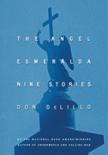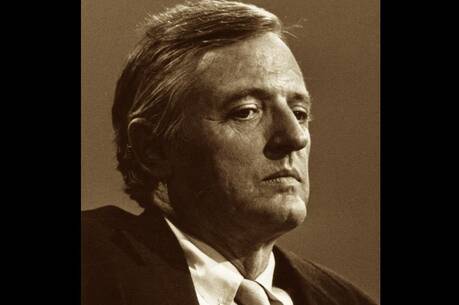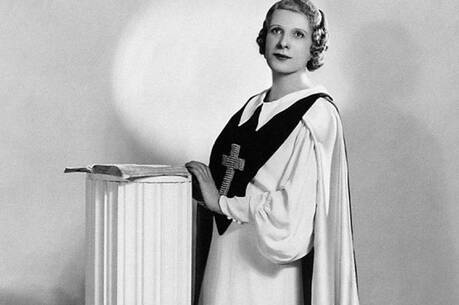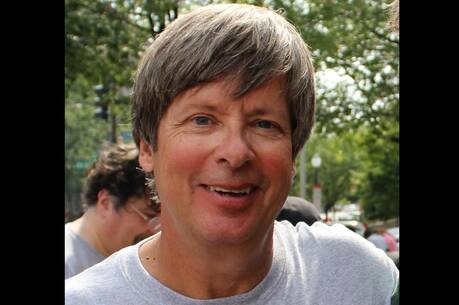Everyday Mysteries
Catholic writers of fiction follow no single path, nor do they adhere to a uniform aesthetic. Some bring to light the often closed world of the clergy. Others dramatize a distinct moral or spiritual dilemma. But most simply dwell in the cultural world of growing up Catholic.
The extraordinary writer Don DeLillo falls into none of these categories; his 15 novels have little in common with a J. F. Powers or a Flannery O’Connor. This would not be surprising but for one fact: DeLillo’s extensive Catholic education. It is possible, as he joked in one interview, that he “slept” through his years at Cardinal Hayes High School in the Bronx. It is far less likely that he skated through his next four years at Fordham, the Jesuit university just a few blocks from his home.
I have reviewed, interviewed and edited a book about DeLillo, but I have never given much thought to the religious dimension of his dazzling oeuvre. But the new collection of his short stories, The Angel Esmeralda, with its overtly religious title story and cover photograph, made me wonder: what exactly was DeLillo’s Catholic education at Fordham in 1954, when he first matriculated? Specifically, I was interested in the theological curriculum, so I called the archivist at Fordham. According to the school catalogue, theology “gives unity and integration to the entire Fordham program.” I found that even a student in communication arts (DeLillo’s self-mocked major) was required to study theology and philosophy (as in scholastic philosophy) in all eight of his terms, not to mention the requirement to attend to the “customary religious duties.”
The titles of the mandatory courses DeLillo must have taken are anathema to someone like me who attended Jesuit school a few generations later: “The Quadriform Gospel,” “The Priesthood of Christ,” “The Mystical Body of Christ,” and—nota bene—“Alpha and Omega.” Note it well for the obvious reason. DeLillo’s last novel, Point Omega, contemplates a number of mysteries at the center of life and also takes inspiration from the legendary Jesuit Pierre Teilhard de Chardin, who conceptualized the idea of an “omega point.” This may be the only explicit mention of a Jesuit in DeLillo’s work, but I think Ignatian spirituality permeates much of his thinking, which is on full display in this collection of nine stories, which span most of his career as a novelist.
As such, these varied fictions provide a perfect introduction for new readers. The contours of his evolving stylistic concerns emerge in short form, and we see how each subject finds its pitch-perfect expression, with DeLillo’s truly incarnational sense of each and every word. True, all of the themes his loyal fans expect are also here: the dread embodied in a child’s random abduction (“The Runner”), the sense of doom experienced by a jailed financial crook as he listens to a litany of crisis and chaos on TV (“Hammer and Sickle”) and a pure cinematic moment of a sexual encounter on a remote tropical island (“Creation”). The brilliant “Human Moments in World War III” more fully imagines the very notion of creation than the story that precedes it, about two astronauts orbiting the planet and discovering transcendence in ordinary things, as they ponder “The Lord of Creation.”
Later stories introduce a number of intriguing hints and suggestions of DeLillo’s Christian spirituality. A meditation on Gerhard Richter’s paintings of dead radicals (“Baader-Meinhof”) includes a cross in the distorted image, a symbol of forgiveness, in the narrator’s view. “Midnight in Dostoevsky” (from a poem by Frank O’Hara) follows two students, both believers in God, as they imagine “the souls” of those in their desolate upstate college town. “The Starveling,” the most recent piece, returns us to one of DeLillo’s perennial situations: a man alone in a room. (Of his own life, DeLillo once said, “The Jesuits taught me to be a failed ascetic.”) The “saintly” moviegoer of the story, a man with no real life of his own, seeks fellow “souls” in the dark and demonstrates a “monkish dedication” in his pursuit of cinematic otherworldiness.
The centerpiece of this collection, though, is the title story, which DeLillo partly incorporated into his magisterial Underworld (1997). Like the breathtaking prologue to that massive fiction (“Pafko at the Wall”), “The Angel Esmeralda” stands boldly on its own. Frankly, it is hard to imagine any Catholic reader who would not be mesmerized by DeLillo’s tale of two nuns set in the “found surrealism” of the South Bronx during the 1970s, at its worst. Sister Edgar, “a figure from the universal church,” does God’s work among the poor and desolate, aided by the young, out-of-habit, Sister Grace. But this is not merely a study in pre- and post-Vatican II sensibilities; it is a testament to “the power of transcendence.” After the brutal murder of a young wild-child in their bombed-out neighborhood, the two nuns draw close. Sister Edgar, on the one hand, is decidedly old-school, talking the language of damnation and the Baltimore Catechism. Sister Grace, on the other hand, speaks the lingo of social justice. What unites them in faith is a singular sight: the transfiguration of the dead little girl. Her image appears on a billboard when light from the el train hits it just so, an image that has brought many religious seekers to the spot. The grace manifest in the vision comforts the old nun as she prays at story’s end, seeking solace from her bodily aches and pains.
Whatever DeLillo’s personal practices and beliefs—I do not pretend to any special knowledge—this story should make clear his appeal to Catholic readers. And if I have not convinced you of his religious sensibility, so be it. When all is said and done, this former Catholic schoolboy deserves the attention of anyone who values great fiction. He is a master of the art.
This article also appeared in print, under the headline “Everyday Mysteries,” in the April 30, 2012, issue.








